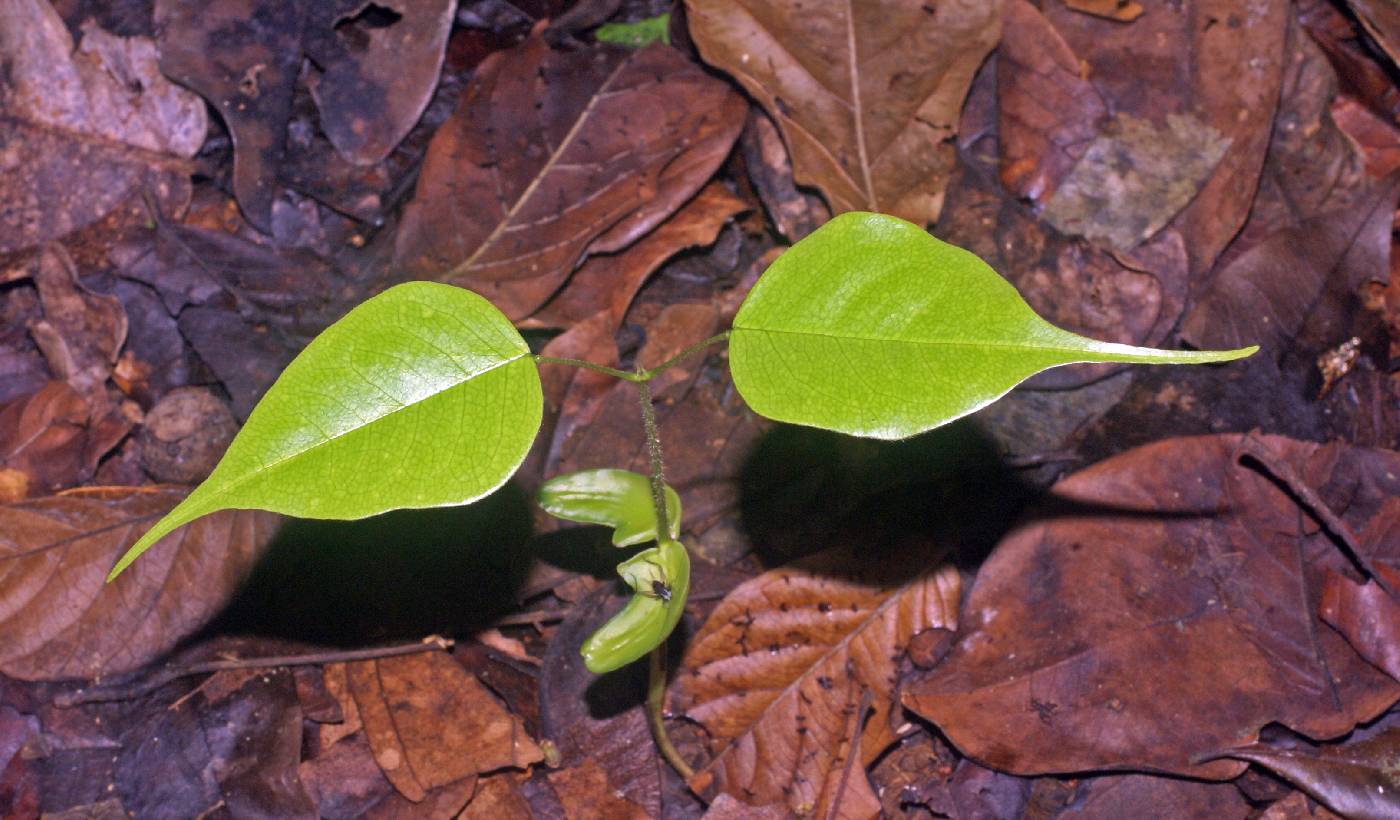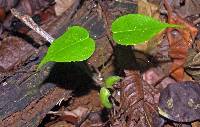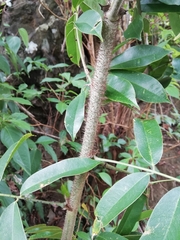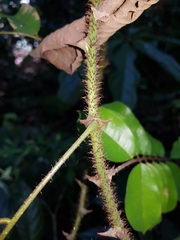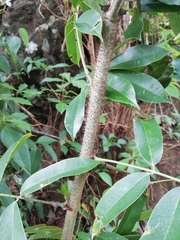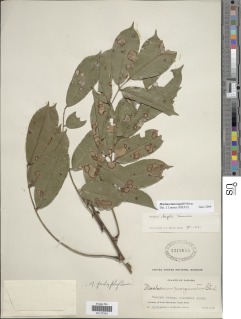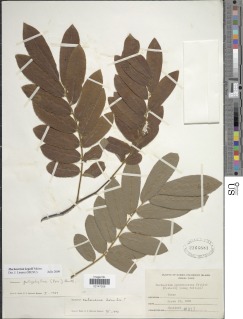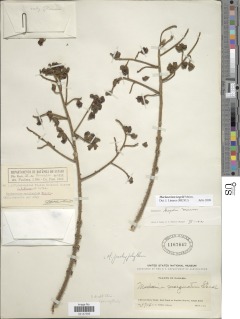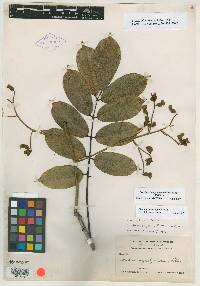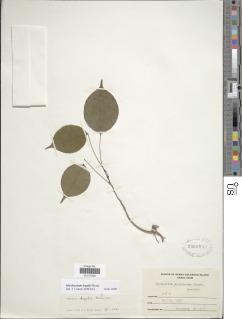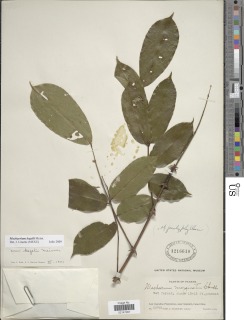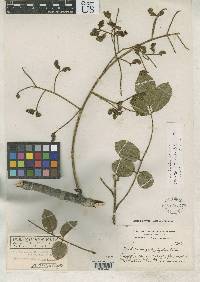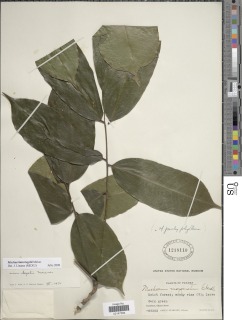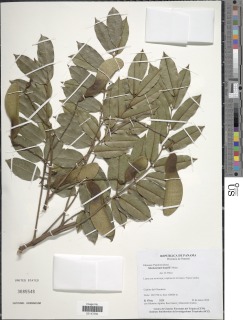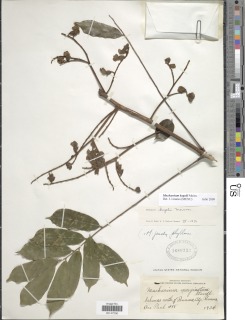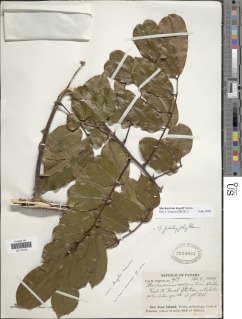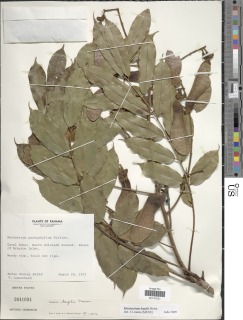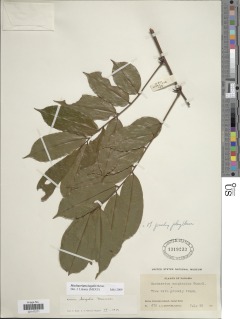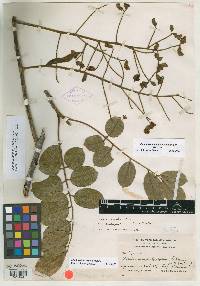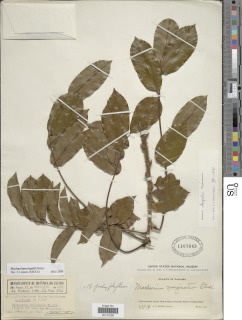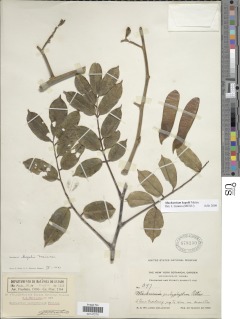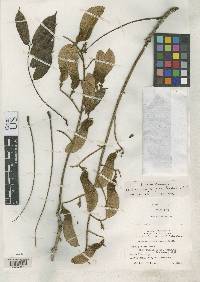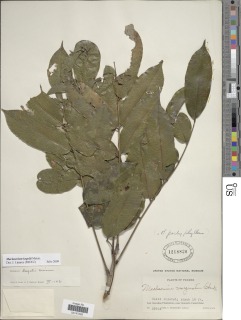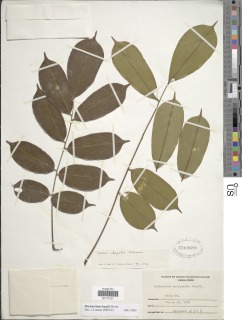

|
|
|
|
Family: Fabaceae
Sangrillo, more...Uña de gato
[Machaerium bracteatum Benth., moreMachaerium marginatum Standl., Machaerium pachyphyllum Pittier] |
Descripción: Plantas trepadoras o lianas con el tronco armado con espinas en forma de aguijón. Ramitas cubiertas de pelos negros y con savia roja al cortarlas. Hojas imparipinnadas y alternas, con 9-17 folíolos, ligeramente alternos en el raquis. Los folíolos de 5-20 x 2-8 cm, ovados u oblongos, con ápice acuminado, bordes enteros y base redondeada o aguda. Los folíolos presentan las nervaduras secundarias del envés reticuladas. Estípulas espinescentes. Pecíolo de 3-5 cm de largo y pulvinado en la base. Inflorescencias en panículas terminales o axilares. Flores blancas o rosadas. Frutos con la semilla basal y un ala en el extremo apical, de 5-9 x 1.5-3 cm. Especies Parecidas: A menudo se confunde con LK machpi Machaerium pittieri LK2 , pero en M. pittieri el tronco no presenta espinas y las estípulas no son espinescentes. Usos: La savia roja que segrega el tronco al cortarlo se utiliza para curar las úlceras estomacales. Liana or arching and scandent tree, to ca 15 m tall; trunk to ca 12 cm diam, the upper part straight, rarely branched, usually arching or pendent from trees; old stems armed with recurved, spiny, woody stipules and conspicuous, stiff, long setae. Leaves compound, clustered near stem apex; stipules triangular, to 2 cm long and 1 cm wide, pubescent, paired, becoming woody in age; petioles to 8 cm long, the pulvinus conspicuous, terete, sparsely pubescent; petiolules stout, ca 5 mm long; leaflets 11-17, mostly oblong, long-acuminate, rounded to truncate or obtuse at base, 4-17 cm long, 2-6 cm wide, usually glabrous or reddish-villous on midrib below, coriaceous, the reticulate veins prominulous, about as conspicuous as the major lateral veins, the margins conspicuously enlarged and discolored. Panicles axillary or terminal, to 90 cm long, usually less than 50 cm long, on short, lateral, usually leafy branches on the terminal 3-4 m of the stem; rachises, peduncles, pedicels, and calyces bearing dense velvety-brown pubescence; flowers to 1.5 cm long; calyx subtended by 2 ovate bracts appressed to the anterior lobes, the carinal tooth acute, exceeding lateral lobes; standard spreading, rufous-pubescent outside, glabrous and lavender inside at least near apex, the center greenish, fringed with violet-purple; wings and keel usually white, weakly held together, the keel petals fused along their outer margin; free stamen united to the staminal tube, all stamens +/- equal, the apical fourth free, strongly turned inward, the free part alternating with short erect appendages; style exceeding the anthers; pistil densely appressed-pilose. Samaras oblong, ca 8 cm long and 2 cm wide, distally winged; seminiferous area narrower, ca 2 cm long, rufous-villous, the trichomes interspersed with much stouter trichomes that have dark swollen bases. Croat 5346, 13984. |

